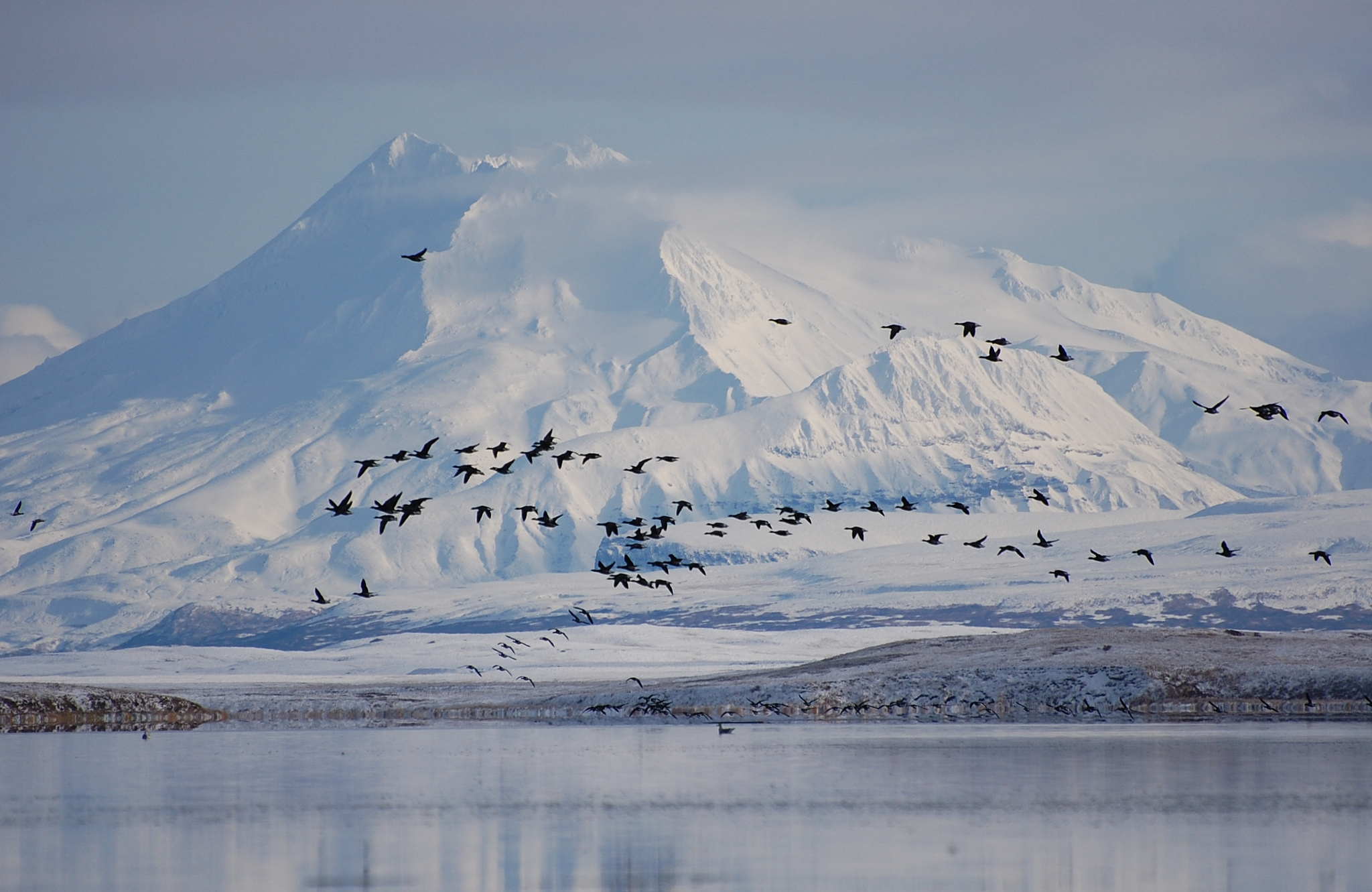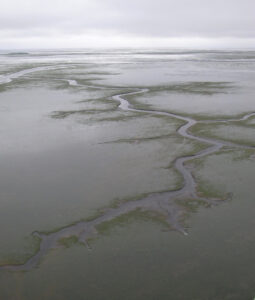
Izembek Road Decision Challenged, Trustees Intervenes
In December 2013 Interior Secretary Sally Jewell reiterated the Department of Interior’s commitment to protect the designated Wilderness of the Izembek National Wildlife Refuge from road construction. Trustees for Alaska worked alongside a coalition of conservation groups to review and provide legal comments on decision documents, including the extensive Environmental Impact Statement (EIS) for the road. In her decision, the Secretary selected the “no action alternative” and rejected the option of allowing a road to be built through Izembek Refuge. This decision is the latest in a long battle to remove lands from Izembek and from a designated Wilderness area to build a road, a proposition the Fish and Wildlife Service has consistently rejected.
A group of Alaska Native tribes, corporation and city and borough governments representing residents of King Cove sued Secretary Jewell, challenging her decision to protect Izembek and the designated Wilderness. The State of Alaska joined the lawsuit on the side of the King Cove plaintiffs. The plaintiffs took a “kitchen sink” approach, and have claimed violations of numerous statutes, including: the Omnibus Public Land Management Act of 2009, the National Environmental Policy Act, the Alaska National Interest Lands Conservation Act (ANILCA), and the federal government’s trust responsibility to American Indians and Alaska Natives.
Trustees for Alaska represents a coalition of conservation groups as intervenors in support of Secretary Jewell’s decision to reject the proposed road. This case will unfold over the next year or so as it makes its way through the legal system.
The Izembek area was initially protected in 1960 when Izembek National Wildlife Range was established to provide a refuge, breeding ground and management area for all forms of wildlife. Then in 1980 it was re-established through ANILCA as the Izembek National Wildlife Refuge. Congress designated 300,000 of its 315,000 acres as Wilderness.
The Izembek Refuge lies between the Bering Sea and the Gulf of Alaska at the end of the Alaska Peninsula where the Aleutian Chain begins. This confluence of marine waters and volcanic landforms creates a biologically rich area, supporting a diversity of waterfowl and birds, mammals, and fish.
Within the heart of the Refuge is the Izembek Lagoon, a 30-mile long and 5-mile wide coastal ecosystem that contains one of the world largest eelgrass beds. Eelgrass communities are among the most diverse and productive in the world, providing food and nursery areas for fish, crabs, and many other invertebrates. The invertebrates, in turn, provide an essential food base for waterfowl and other species. Virtually the entire population of Pacific black brant, approximately 150,000 birds, as well as Canada and emperor geese use the lagoon as a feeding and staging area during migration months. Steller’s eiders use the area not only as a feeding station but also to rest and molt.
Protecting this important bird area is vital to Alaska communities far north of the Alaska Peninsula. The waterfowl species stopping to re-build fat reserves on the Izembek eelgrass beds during spring migration continue north to their breeding grounds throughout the Yukon-Kuskokwim Delta. Development and habitat loss along the Pacific Flyway has already reduced numbers of brandt and geese species critical to subsistence for Alaska Natives in the delta. Reducing or eliminating protections currently in place by allowing a road to be built through designated wilderness is ominous for both the species that rely on the area and humans that rely on those species.
Trustees for Alaska defends the Secretary’s Record of Decision to protect the core values of the Izembek National Wildlife Refuge—protecting habitat and species for the benefit of all.
Support Trustees for Alaska’s work to protect Izembek National Wildlife Refuge with a financial contribution.
TL;DR Izembek Road Decision Challenged: Trustees for Alaska represents a coalition of conservation groups as intervenors in support of Secretary Jewell’s decision to reject the proposed road.
Related Links:
DOI’s Record of Decision
Opinion Piece in the Alaska Dispatch News: Stopping Izembek Road Protects Villages and Subsistence Resources
Alaska Dispatch News Story: King Cove Road Fight Spotlights Clash of Perceptions, Priorities



